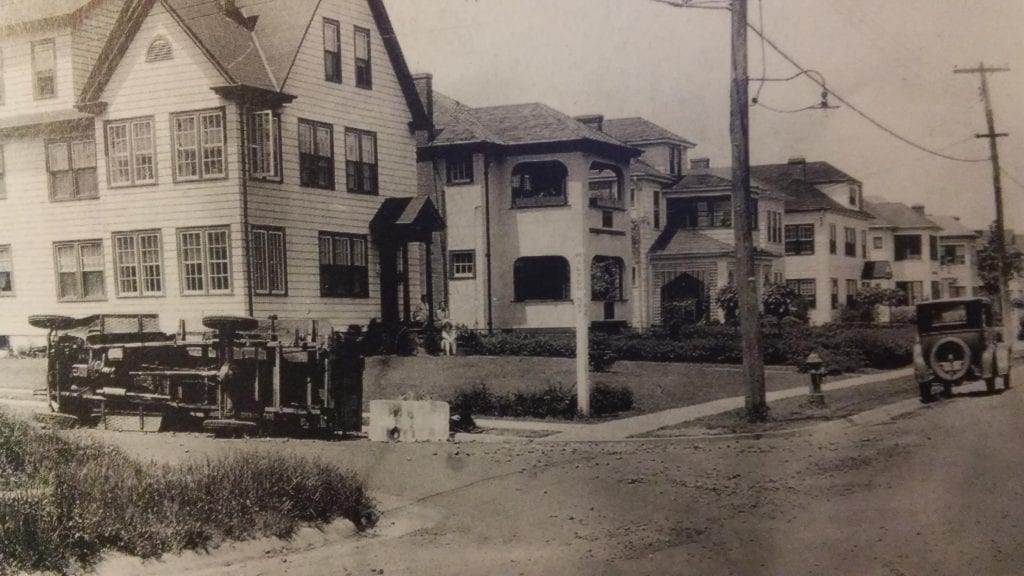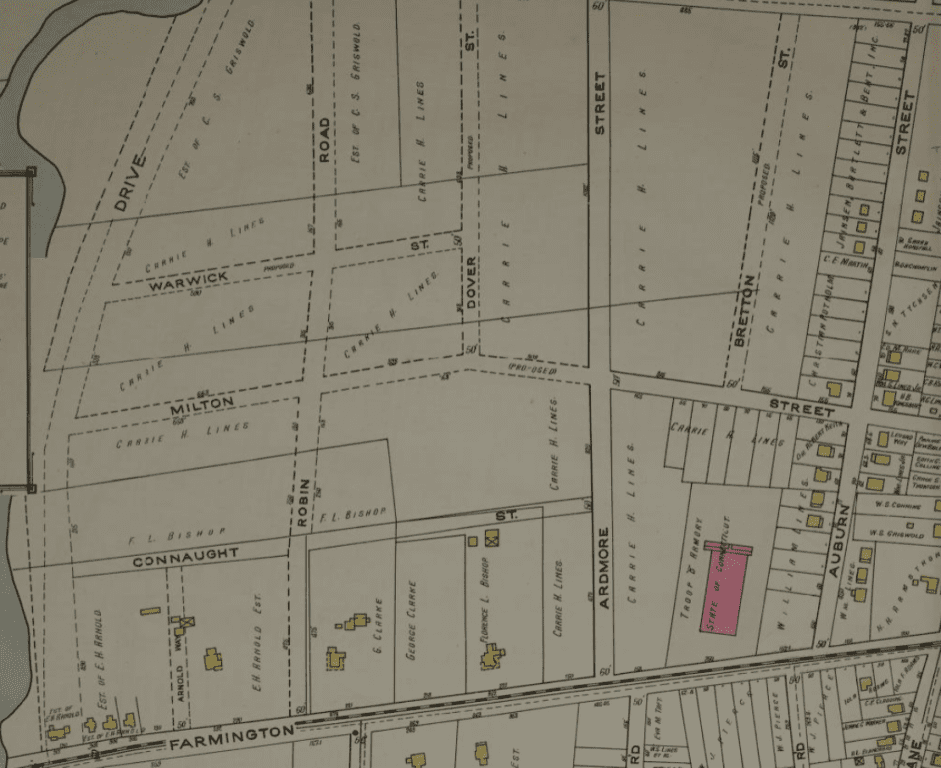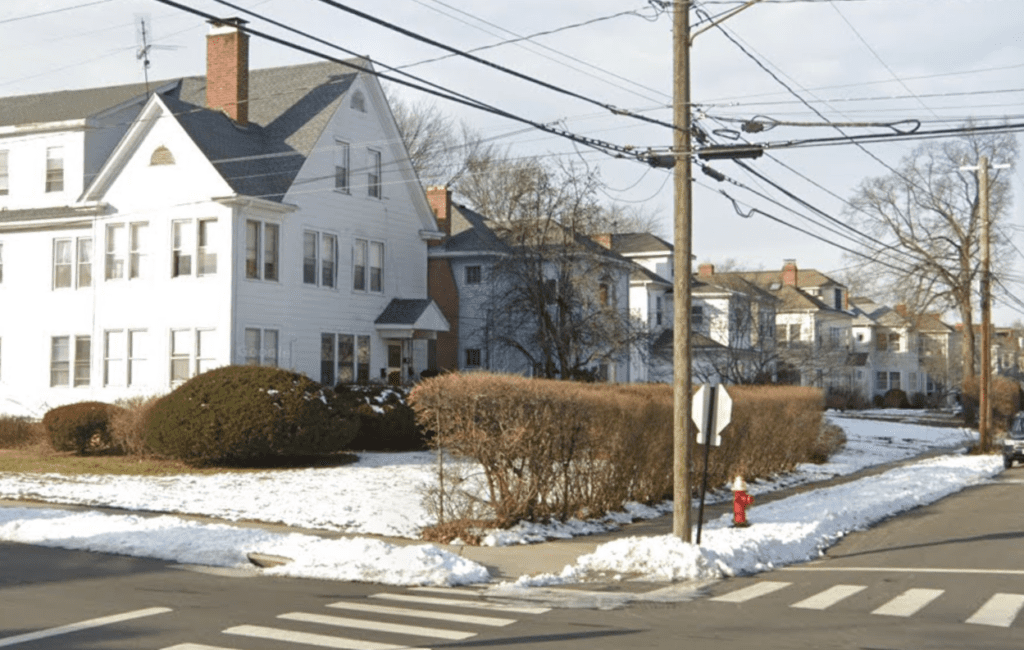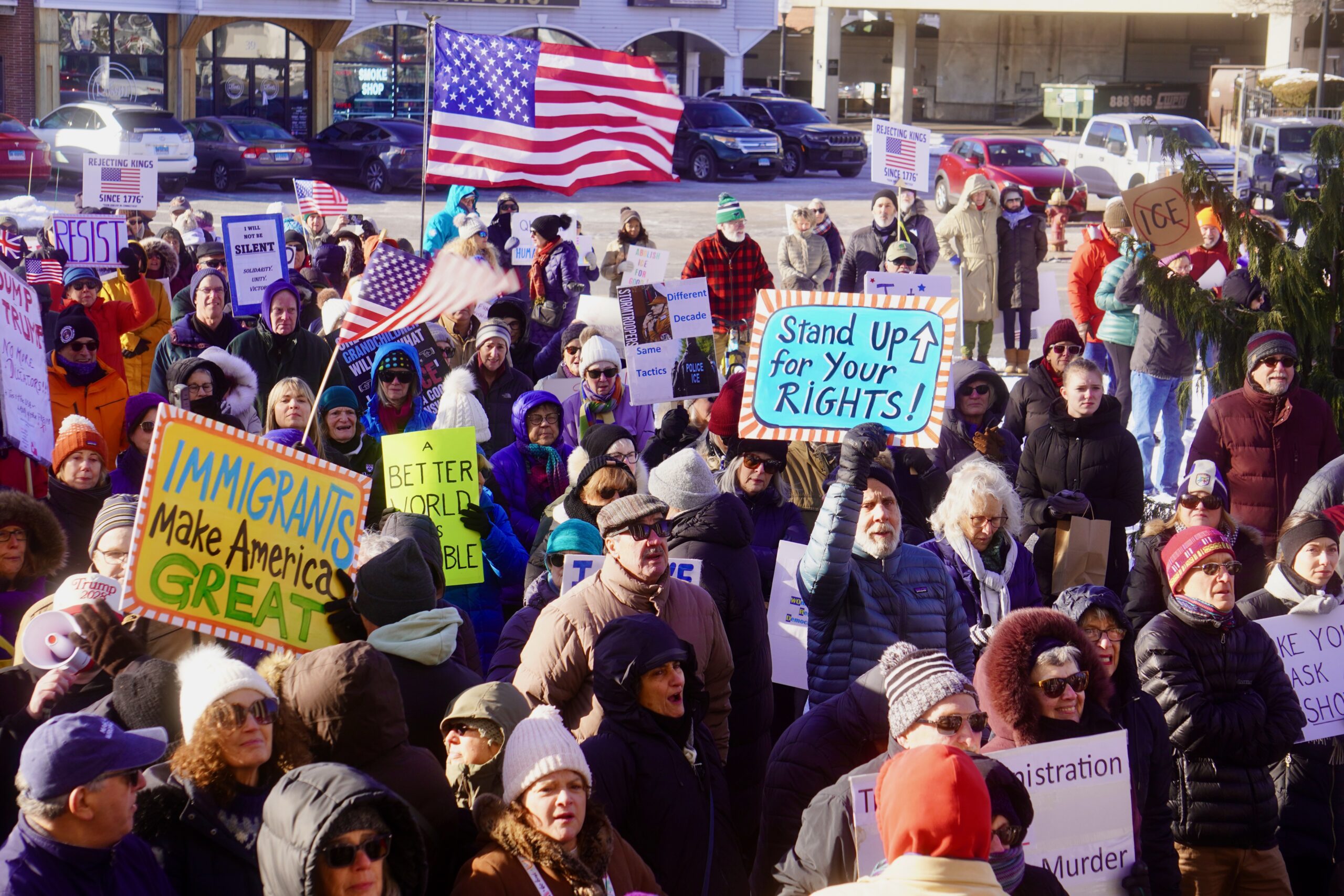From the West Hartford Archives: Corner of Milton Street and Ardmore Road

Audio By Carbonatix

Corner of Milton Street and Ardmore Road. Courtesy of Noah Webster House & West Hartford Historical Society
Historian Jeff Murray takes a look into West Hartford’s past to uncover some surprising information, stir up some memories, or reflect on how much life has changed – or hasn’t changed at all. Enjoy this week’s ‘From West Hartford’s Archives’ …
By Jeff Murray
This photograph is of the northwest corner of Ardmore Road and Milton Street, and shows an ice truck that has overturned.
To truly understand the development of this neighborhood, one must know the family of William S. Lines and his wife Caroline Hovey. Born in Newark, New Jersey in 1848, Carrie Hovey’s parents, Henry and Mary, were residents of New York City in the early 1800s (her father was a commander who was lost at sea upon a steamer).
Carrie, too, lived in the city until her marriage in 1886 to William S. Lines, a wealthy Manhattan merchant of dry goods. Ten years her senior, Lines retired in 1891 and the couple looked to live elsewhere. They chose West Hartford, moving here from the city the same year and building a house at 39 Highland Street.
Despite his retirement, Lines acquired several pieces of land in town over the years, including west of the Center, until the day he died in 1911. He was active in the development of the Prospect Avenue area, involving himself in the construction of the Prospect Casino clubhouse on Farmington Avenue and serving as First Selectman in West Hartford. His wife Carrie raised their son William Jr., a budding insurance agent at Travelers; her husband had children from a previous marriage, including Ernest Lines (whose wife Elizabeth and daughter Mary Conover Lines were actually survivors of the Titanic sinking in 1912).
Carrie acquired a significant amount of land in her own name as well, buying six acres on the north side of Farmington Avenue between Stanley Street and Arlington Road. After William’s death in 1911, Carrie inherited the rest, including the northeast corner of Farmington Avenue and Mountain Road. She was active in the formation of the local West Hartford chapter of the Daughters of the American Revolution, descended from Edmund Freeman of Mansfield, Connecticut.
While she sold off a lot of the land she owned, Carrie and her son, William Jr. spent the next 10 years developing the land east of Trout Brook, starting first with North Quaker Lane in 1915. Lines built five houses, including three cottages, along the road that summer. Four more single cottages followed the next summer. Carrie owned almost all of the land between Trout Brook and North Quaker Lane, selling off bits and pieces to William Jr. for construction.
Upon the American entry into World War I, development stalled as Lines was commissioned as first lieutenant at Camp Funston in Kansas in October 1918. Some of the first recorded cases of the influenza were reported at Camp Funston just months before Lines’ presence there. He served as a captain with the 169th Field Artillery.

1917 map of the area north of Farmington Avenue – Carrie Lines owned 90% of the land here.
After William Jr. returned home in 1919, he went right back to work. Working in partnership with another Hartford real estate agent, Frederick Kenyon, the two bought 10 acres of land on the south side of Farmington Avenue across from Auburn Road to develop Westfield Road. He followed that up with the construction of houses along Auburn Road in 1920 and Ardmore Road in 1921.
It is clear that the Lines family had a plan for the layout of streets all the way to Trout Brook as seen in a 1917 map, years before they were made official. By the middle of the 1920s, most of Ardmore Road was built up and some two-family homes were being built along Farmington Avenue. In 1927, the next step was taken when the land west and north of Ardmore Road was developed, including Dover Road, Robin Road, Milton Street, Warwick Street, and Bretton Road. Construction was reserved first for Edward J. O’Hara, noted builder of two-family houses.
The increased construction of multi-family homes in the 1920s, including apartments nearby, led to the creation of a zoning commission in West Hartford in the summer of 1923.
There was a growing sentiment that the explosion of the population of Hartford would bleed into West Hartford and therefore orderly and regulated construction was necessary to ensure that development was done “right.” There were definitely examples of those in favor of zoning purely for racial and ethnic concerns – the idea that non-white, non-Protestant migrants from Hartford could sully the pure essence of a beautiful picturesque town like West Hartford. There was also, however, a general financial concern that vast tracts of land in West Hartford were being kept vacant while already-settled land was being further and further subdivided and congested with things that decreased property values, like apartment buildings, stores, and even garages. Yes, on some streets, like Lancaster Road, the idea of a garage for a car was blasphemy.
With the establishment of zoning rules, the area north of Farmington Avenue was much more permissible to two-family housing. This neighborhood, with a large tract of undivided land but still close to Hartford, was extremely desirable and the construction of two-family houses was still economical. In some cases, streets in this area were rezoned for two-family houses and petitions to rezone them to single-family houses were denied. Zoning disputes would remain heated for years though.
Carrie Lines saw almost all of the lots north of Farmington Avenue built on by the time of her death in 1928. It would take another decade for the rest of Robin Road, Warwick Street, and Milton Street to be completed, although William Jr. had moved out of town by this point. This neighborhood was the legacy of the Lines family at a time when two-family houses were becoming popular (and regulated).

Corner of Milton Street and Ardmore Road. Google Street view
Jeff Murray was born and raised in West Hartford and has been involved with the Noah Webster House & West Hartford Historical Society since 2011 when he was a high school student and won the Meyer Prize for his essay on local history. Jeff routinely volunteers as local history researcher uncovering information for numerous museum programs such as the West Hartford House Tour and West Hartford Hauntings. Jeff works as a data analyst at Pratt & Whitney.
Like what you see here? Click here to subscribe to We-Ha’s newsletter so you’ll always be in the know about what’s happening in West Hartford! Click the blue button below to become a supporter of We-Ha.com and our efforts to continue producing quality journalism.



